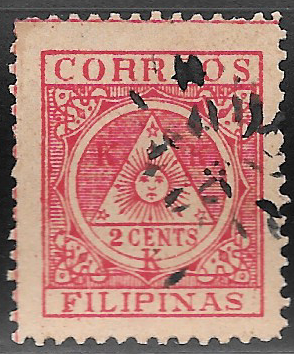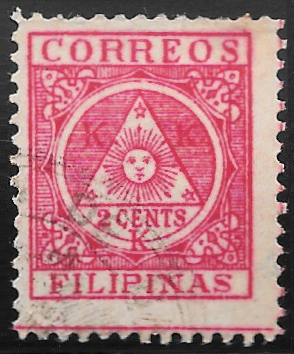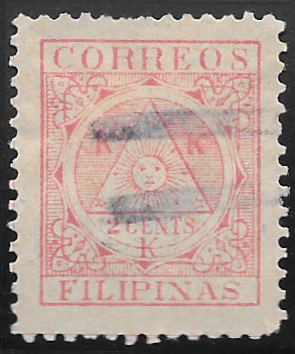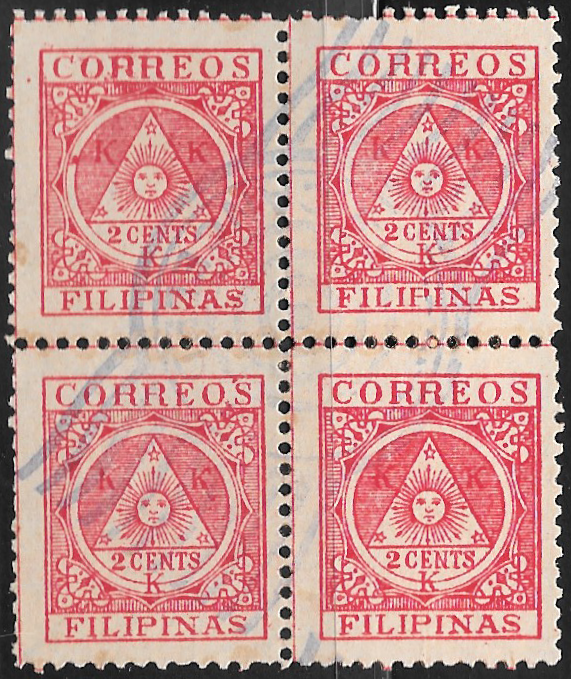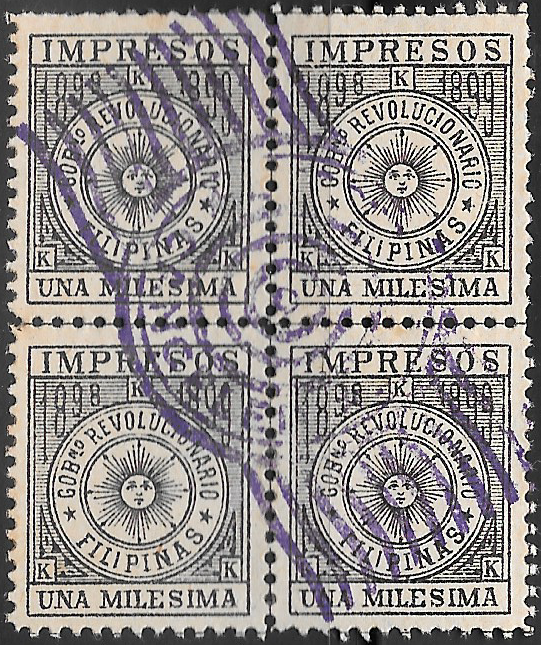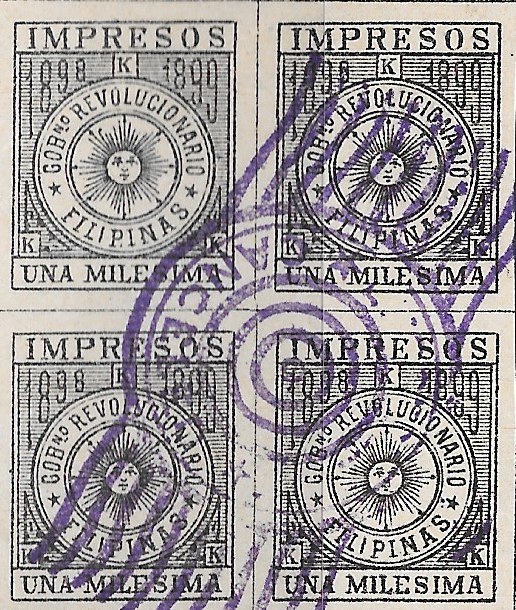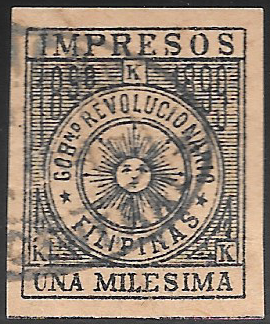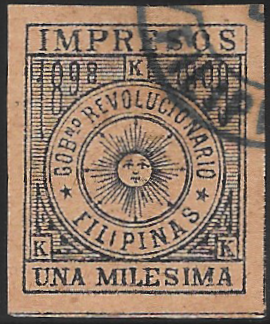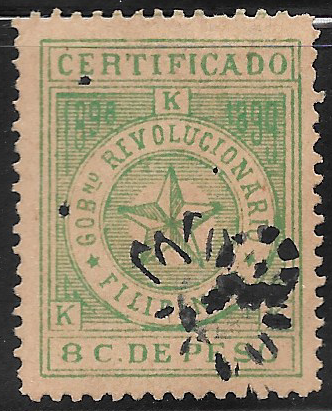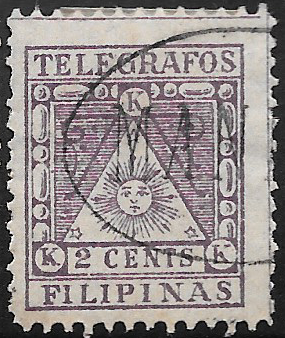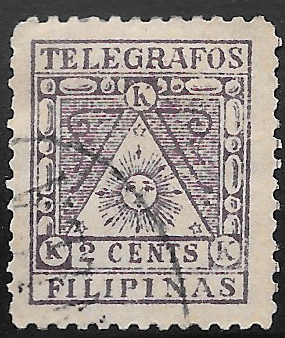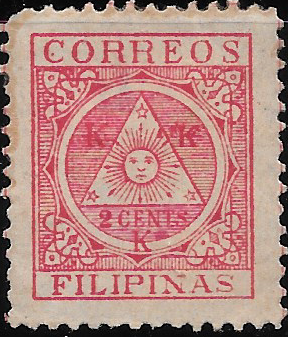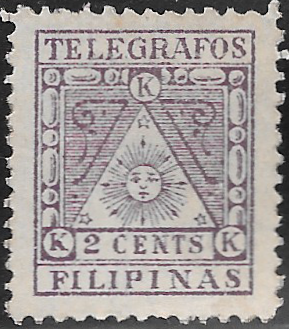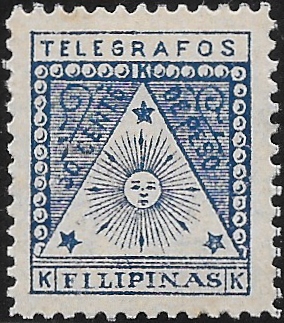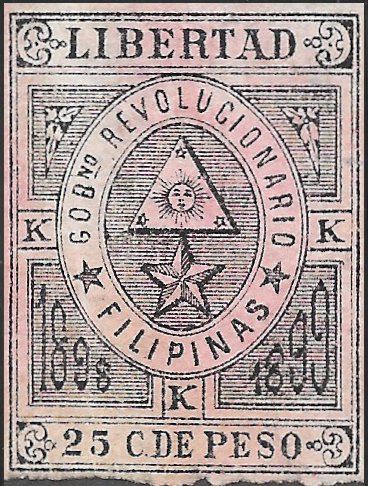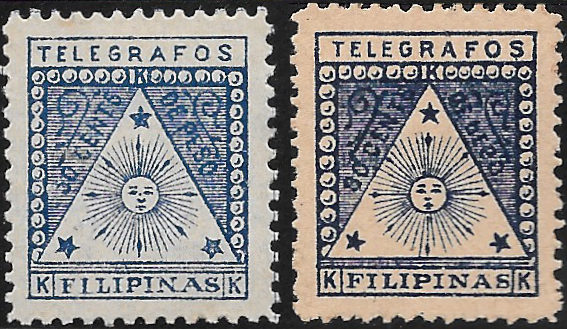The short-lived revolutionary government of Emilio Aguinaldo produced a number of revenue stamps between 1898 and 1901. Some of these stamps are now very scarce and quite valuable while other are very inexpensive. No Philippine collection is complete without these stamps.

Revolutionary Government (1898-1901)
Let’s start with a very brief historical recap before we get into the stamps…
It was in August 1896 that the start of the Philippine Revolution against Spain got underway. Led initially by Andres Bonifacio it was started as a secretive organization against Spanish Colonialism and domination. Power would transfer to Emilio Aguinaldo after Bonifacio’s capture (and execution) in 1897. Soon after, in 1898 (25th April – 13th August), the short-lived Spanish-American war would start in reaction to the (supposed) sinking of the USS Maine in Havana Harbor by the Spanish. May 1st saw the the Battle of Manila Bay in which Commodore George Dewey would lead the U.S. Asiatic Squadron to annihilate the Spanish Naval fleets in Manila Bay. On May 19th Aguinaldo formed an alliance with the U.S. and was transported by Dewey back to the Philippines from voluntary exile in Hong Kong to continue fighting the Spanish. By June 9th Aguinaldo’s forces would control many provinces of the Philippines. On the 23rd June 1898 Emilio Aguinaldo declared Philippine independence and became the first President of the First Philippine Republic. August 13th saw the capture of Manila by U.S. forces, despite Aguinaldo’s forces already laying siege in the city. A decision by the U.S to block Filipino fighters from the City of Manila creates tension and starts to unravel the alliance between the Filipinos and the Americans. The final exchange of documents under the Treaty of Paris on April 11th finalized the American “purchase” of the Philippines from the embattled Spanish and led to the June declaration of war on the U.S from the First Philippine Republic – referred to by the U.S. as an insurrection. Aguinaldo was eventually taken prisoner by United States troops on March 23, 1901.
Despite all of the above, the First Revolutionary Government set about creating stability and implementing the necessities to support a free nation. For example, a Filipino army was organized, civil Governments were established, the postal system was once again made operational, telegraph lines were repaired and tax collection was enforced. The Government issued revenue stamps for receipts, transfer of livestock, telegraph services and newspaper purchases. Additionally, an extensive range of papel sellado stamps (documentary stamped revenue paper) was also produced in 8 different values. The First Revolutionary Government produced revenue and postage stamps locally in Manila. In a time of such significant change and turmoil it was not uncommon for revenue stamps and postage stamps to be used interchangeably based upon whatever was available at the time and location.
Used copies of these stamps range from being scarce to rare. While there is no question whether these stamps were actively in use, it is theorized that recipients of correspondence bearing these stamps would destroy the correspondence in fear of being accused of participating in the “insurrection” and subsequently being punished by the Americans. I will showcase some used Revolutionary Government stamps in a later section if that’s your thing.
A note on the Papel Sellado’s referenced above: Mimicking the stamped revenue paper of the Spanish in size, each sheet was 8.5 x 12.5 inches. Paper was issued in double sheets with the first sheet containing the stamp at top, an embossed seal to the left of it and a serial number to the right of the stamp. My examples have all been trimmed from the paper and do not possess the seal or serial numbers. Inconsistency in paper thickness and watermarks are common across produced stamped paper. Whole sheets of paper are extremely scarce.
Color and Other Variations
Color variations are not uncommon in these stamps, it is likely that some variation is attributed to an expedited production timeline. Some variations could also be due to the fact these little pieces of paper are over 120 years old now. The collector will also see stamps printed on white or buff paper. Here are some variations from my collection.
Used Revolutionary Government Stamps
Since used examples of these stamps are often harder to obtain than mint varieties I decided that they should have their own gallery. Even more valuable/collectable than used stamps are used stamps still affixed to covers, I often see these sell from $500USD to a few thousand dollars per cover.
